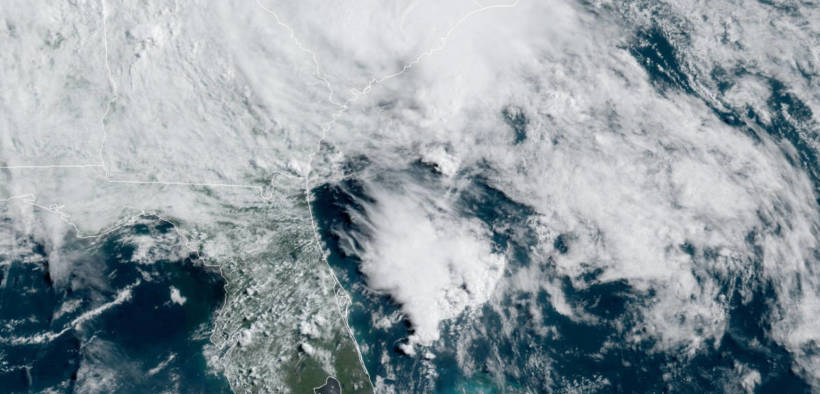The Worst Time for a Hurricane

The National Oceanic and Atmospheric Administration predicts an above-average hurricane season for 2020.
The 2020 hurricane season began on May 15th in the Pacific and starts on June 1st in the Atlantic. NOAA predicts a “busy” season and with the ongoing COVID-19 pandemic a major hurricane in the U.S. this year will be even harder to prepare for, endure, and recover from.
The Price of Preparation
As the economic consequences of the COVID-19 pandemic mount, more and more Americans are finding themselves financially struggling. Nationwide, job losses have climbed to historic levels not seen since the great depression and unemployment offices around the country are overwhelmed as record numbers of people have tried to access benefits. Applications for the Supplemental Nutrition Assistance Program (SNAP) have also skyrocketed, and the USDA has approved increasing benefits for some families in order to help stave off food insecurity during the pandemic.
While hoarding and stockpiling of some essential items made headlines during the early stages of the crisis many simply cannot afford to buy two weeks’ worth of food and supplies, which is the recommended minimum to have on hand in case of a hurricane. In low cost of living states like Alabama, Texas, or Louisiana a week’s worth of groceries for a family of four could be around $180, so two week’s worth of food to prepare for a hurricane would be $360. In Hawaii where food can cost twice as much, the recommended amount of hurricane supplies for a family could easily be over $600. For people who were laid off or furloughed early in the crisis covering housing, utilities, everyday food, and added hurricane supplies may be out of the question, even with government assistance. The National Oceanic and Atmospheric Administration has predicted 3 to 6 hurricanes category 3 or higher. If a major storm hits many families will be facing the prospect of weather the storm with inadequate supplies.
Systems Already Overwhelmed
Unemployment offices and the agencies that administer SNAP are only a couple of the social welfare systems that have been stretched beyond their limit by COVID-19. While the numbers of COVID-19 cases are down in many places, in some parts of the country health care facilities are still operating at capacity. Even as many states and municipalities move forward with reopening efforts the spread continues. Second peaks are already being reported and hospitals may be facing another wave of fresh cases soon.
Food banks and food cupboards are also seeing greatly increased demands. In places where unemployment has increased the most, food distribution centers are purchasing as much as 10 times the amount on food that they did last year, and people who have never used a food bank before are finding themselves in need.
Local health care and food distribution are essential immediately following a natural disaster like a hurricane. If a storm hits while COVID-19 is still active these organizations will be expected to continue to operate at their current levels until the hurricane, weather the storm, and then provide emergency assistance afterwards to victims of the disaster and those continuing to be impacted by the virus. Unless additional resources are provided relying on already strained providers could lead to lapses in care and supplies during preparation and recovery.
Hurricane Shelters
The way hurricane shelters are designated and managed is intended to keep the maximum number of people as safe as possible from a storm. They are not designed to keep people safe from a highly contagious virus. During a fire, flood, or tornado there are a number of options for hurricane shelters. The local branch of the Red Cross is usually in charge of opening and manning shelters and for anything except a hurricane they try and try and use any type of building except schools. The logic behind this is that in order for people to get back to work, kids need to get back into school, so keeping a school closed to serve as a shelter can inhibit community recovery after a disaster. In the case of hurricanes schools are often the designated shelters for a community because they are often the only building in the community that meets the necessary building requirements to withstand a very powerful hurricane.
Schools are not designed to keep people apart, especially if they are being used to shelter large numbers of people. The Federal Emergency Management Agency (FEMA) recommends 20 square feet per person in a hurricane shelter, meaning each person has a square of less than 5ft per side, making it impossible to maintain 6ft social distancing. Some state agencies require only 10 square feet per person. If a serious hurricane hits during the COVID-19 pandemic people may have to choose between staying in their homes and risking the storm or moving to a shelter and risking the virus.
Hurricanes and viral outbreaks are both natural phenomenon that occur with some regularity so statistically speaking it is not that improbably that at some point both will strike the same area at the same time. However, as COVID-19 has revealed, in many ways the U.S. has been woefully unprepared for the virus alone. Cities, states, health care organizations, and individuals have all been expected to go it alone and use their own resources to protect themselves. Rules and recommendations have been inconsistent in different areas and have been motivated by political leanings as often as by any scientific understanding of virus.
FEMA has released COVID-19 Operational Guidance for the 2020 Hurricane Season that discusses that added challenges and complications that a hurricane, or any other disaster will bring this year. The document concludes that FEMA expects “partners and fellow emergency managers to problem-solve, act, and do what emergency managers do best—coordinate, communicate, and collaborate.” But it’s hard to expect that emergency managers at the state or local level do their “best” in case of a hurricane, when the national level response to the COVID-19 emergency has left close to 100,000 Americans dead.













